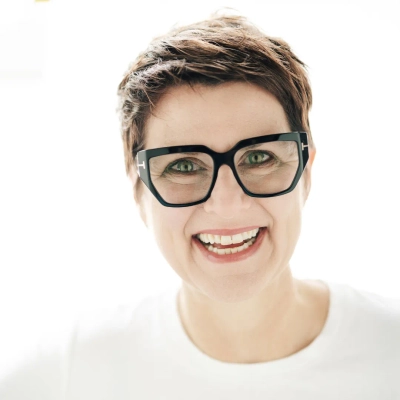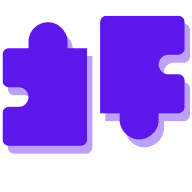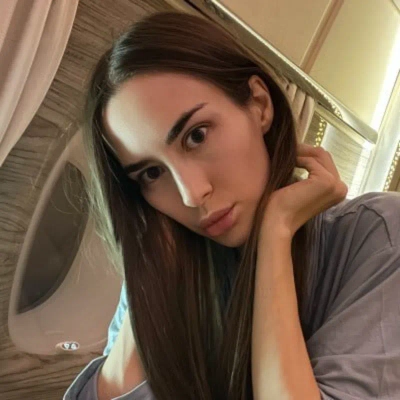16 Career Goals That Challenge Creativity and Foster Innovative Thinking
Successful professionals are constantly finding new ways to challenge their creativity and foster innovation across diverse fields. This comprehensive guide explores sixteen career paths that push creative boundaries, featuring expert insights on everything from AI partnerships to neuroscience in leadership. These career goals demonstrate how professionals can blend technical expertise with unconventional thinking to drive meaningful innovation in their industries.
Rethink User Engagement Through Unconventional Methods
For me, A career goal is about making people actually engage. It should be not like something that one had to scroll past out of boredom. That means I can't recycle the same tired playbook. It pushes me to think about user behavior like a detective solving crimes no one asked for. Instead of "How do I sell this thing?" the question becomes "Why would anyone even care?" That shift alone forces outside-the-box thinking, because the answers are rarely obvious and usually uncomfortable.
To keep my creativity and problem-solving alive, I treat it like going to the gym, except less sweaty. I read way outside my field, steal ideas from industries that have nothing to do with mine, and prototype ridiculous solutions just to see what breaks. I also force myself into constraints, like "solve this problem without spending money," which turns into a weird game of survival mode. It's chaos, but it works.
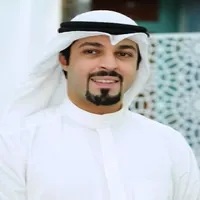
Building Digital Solutions Through Cross-Industry Learning
One career goal I'm actively pursuing is building a digital platform that helps small business owners streamline their operations without relying on expensive software or consultants. It's challenging because the needs of these businesses are so varied, and there isn't a one-size-fits-all solution. To solve problems effectively, I constantly have to think outside the box—rethinking workflows, imagining tools from the user's perspective, and anticipating pain points they might not even realize they have.
To foster my creativity, I expose myself to ideas outside my industry. I read case studies in healthcare, education, and gaming, looking for innovative approaches I can adapt. I also dedicate time each week to "brainstorm without limits," jotting down wild or impractical solutions first, then filtering for feasibility later. That exercise trains my mind to see possibilities rather than immediately judging ideas as unrealistic.
For problem-solving, I collaborate regularly with peers and mentors, encouraging them to challenge assumptions and point out gaps I might overlook. I find that talking through challenges forces me to clarify my thinking and often sparks new directions I wouldn't have discovered alone.
This combination of cross-industry learning, free-form brainstorming, and collaborative critique keeps me pushing boundaries. It's not just about completing a project—it's about training my mind to approach problems with curiosity and innovation, which ultimately strengthens both my solutions and my own professional growth.

AI as Creative Partner in Agency Leadership
One of the career goals I'm pursuing right now is to push the boundaries of how digital agencies like Nerdigital can use AI—not just as a productivity booster, but as a creative collaborator. It's easy to use AI for automation, but the challenge lies in using it to spark innovation rather than replace it.
I've always been fascinated by the intersection of creativity and technology. A few years ago, I caught myself falling into the same trap many entrepreneurs do—getting buried in operations and efficiency metrics while creativity took a backseat. I realized that as a leader, if I stopped thinking creatively, the entire company would start mirroring that mindset. That was the turning point where I decided to make "creative innovation" a personal and professional goal.
To stay sharp, I intentionally expose myself to ideas outside of marketing and tech. I read about psychology, study architecture, and even observe how artists structure their creative process. I also hold what I call "curiosity sessions" with my team, where we explore wild ideas without the pressure of making them immediately practical. Some of our best strategies—like our adaptive content frameworks—were born from those unstructured discussions.
Thinking outside the box for me means constantly questioning our defaults: Why do we create campaigns this way? What if the traditional client brief was replaced by a live collaborative workshop? What if success metrics included emotional resonance, not just conversions?
By challenging these assumptions, I've learned that innovation isn't about reinventing everything—it's about reframing what's already there. The more I lean into experimentation, the more I realize that creativity thrives when you create psychological safety for it.
This ongoing pursuit has reshaped how I lead. I no longer see creativity as something separate from strategy; I see it as the bridge that turns abstract goals into meaningful breakthroughs. And as our industry evolves, that mindset—not just the tools—will determine who truly stays ahead.

Developing Predictive Cybersecurity Through Collaborative Innovation
My current goal is leading my team to develop a predictive, AI-based cybersecurity service. This challenges us to move beyond reactive solutions and create something genuinely innovative. To foster creativity, we dedicate time to 'blue-sky' sessions where no idea is off-limits and cross-pollinate ideas with experts from different fields. This approach helps us break conventional problem-solving patterns.
Optimize Systems With Event-Based Architecture
My current work involves optimizing distributed system data synchronization between multiple services while avoiding tight system connections. Our team at the enterprise client implemented RabbitMQ as an event bus to replace direct API connections between financial and inventory workflows in their multi-module ERP system. The system achieved better fault tolerance and reduced interdependency between components through this change which occurred during partial outages.
I test architectural patterns while asking my team to establish service boundary definitions through design-by-contract methods. I conduct periodic code review sessions in areas outside my typical work domain including front-end development and DevOps Workflows to observe alternative solutions for various problem types. The practice maintains my ability to view things from different angles.
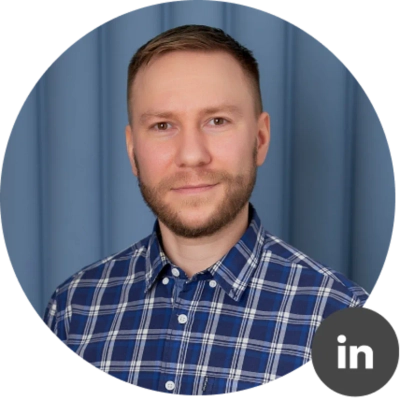
Design Lingerie That Balances Strength With Delicacy
Designing new ways for women to experience their bodies leads me to develop fresh perspectives. Lingerie functions as more than fabric because it represents emotional design principles. I continuously seek to understand how clothing can unite gentle touch with robust energy in its design. I aim to create clothing that delivers delicate sensations yet possesses the strength of a tempest.
My creative process involves collecting inspiration from flower markets and old poetry books and the sensation of saltwater on my skin. My body guides my sketching process instead of depending solely on mental thoughts. I maintain my creative spark by being with women who choose to experience life with intense emotions. Real innovation starts when people choose to feel deeply.
Integrate Solar Roofing Through Multi-Trade Collaboration
My career goal that challenges me to think outside the box is to become the recognized, hands-on expert in structural solutions for integrated solar roofing and waterproofing. It's easy to install solar panels on a rack; the innovative solution is doing it without compromising the structural integrity of the roof underneath, ensuring the whole system lasts thirty years.
This goal forces me to think outside the box because traditional roofing methods and solar installation methods often conflict—one wants to keep water out, the other wants to pierce the structure to anchor a panel. The solution can't be found in a manufacturer's manual.
I foster my creativity and problem-solving skills with a simple, hands-on approach: Forcing collaboration between different trade experts. I spend a mandatory day each quarter with a master plumber, a structural engineer, and a high-voltage electrician. I don't talk about sales; I talk about the friction points where our hands-on trades meet on a roof—where the pipe goes through the shingle, where the heavy battery is anchored to the rafter.
By forcing myself to understand the non-roofing structural problem from their specialized, hands-on perspective, I am creatively developing integrated solutions that no single trade expert could find alone. The goal is to develop a single, clean, hands-on process that every trade can trust. The best way to foster creativity is to be a person who is committed to a simple, hands-on solution that organizes the chaos of multiple specialized problems.
Transform Patient Engagement Beyond Clinical Boundaries
A current goal is developing new models for patient engagement that move beyond traditional reminders and surveys. The challenge lies in designing systems that feel less like compliance checks and more like genuine dialogue between patients and providers. To foster creativity, I spend time studying approaches outside of healthcare, such as loyalty programs in retail or interactive platforms in education, and then adapt those insights to fit regulatory and ethical boundaries in medicine. Problem-solving comes from blending structured analysis with experimentation, piloting small initiatives before scaling them. This process has led to unexpected solutions, like gamified medication tracking that rewards consistency, which would not have emerged from a strictly clinical perspective.

Expand Land Ownership Access With Digital Tools
Our current goal of expanding land ownership access beyond traditional buyers requires new thinking about financing and outreach. We're developing digital tools that let families explore properties, calculate payments, and start the approval process entirely online, which breaks down barriers of distance and time. To stay creative, our team studies how other industries—like micro-lending and education technology—simplify complex systems for everyday users.
We translate those ideas into practical features that make land buying less intimidating. Collaboration also fuels innovation; listening to buyer feedback and community leaders often sparks the best solutions. Treating each challenge as a design problem rather than a sales hurdle keeps us inventive and rooted in our mission to make land ownership attainable and understandable for working families.
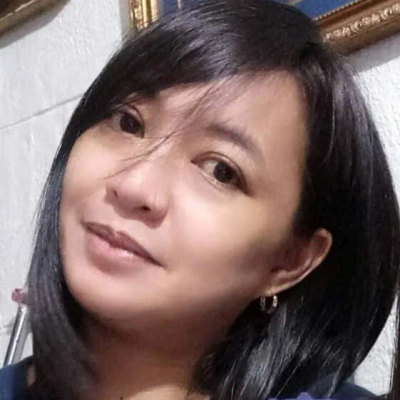
Reimagine Primary Care With Personalized Health Plans
One career goal involves reimagining the patient experience in primary care by designing personalized health plans that go beyond standard protocols. This requires thinking beyond traditional appointment structures and insurance constraints to create solutions that truly address each patient's lifestyle, environment, and long-term health goals. Fostering creativity begins with observing patterns in patient needs and experimenting with novel approaches, such as integrating wearable technology, remote monitoring, and data-driven wellness coaching into routine care. Collaborative brainstorming with team members from diverse backgrounds also fuels problem-solving, allowing unconventional ideas to be tested in controlled ways. Regular reflection on outcomes, coupled with reviewing emerging research and technology trends, sharpens the ability to iterate quickly and develop solutions that improve both health outcomes and patient engagement. This approach ensures that each innovation is grounded in practical impact while pushing the boundaries of what primary care can achieve.
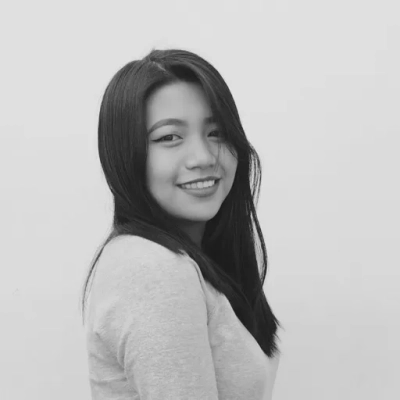
Redefine HVAC Service With Smart Technology
As the CEO and founder of ALP Heating LTD., my career goal has always been to redefine what exceptional HVAC service looks like in our community. The Greater Toronto Area, with its diverse climate challenges-from sweltering summers to frigid winters-demands innovative solutions that not only meet but exceed customer expectations. This is a challenge that drives me to think outside the box daily.
One of the most pressing areas I'm focusing on is enhancing energy efficiency in residential heating and cooling systems. With rising energy costs and a heightened awareness of environmental responsibility, I see a significant opportunity to leverage smart technology-like smart thermostats and energy-efficient units-to create customized solutions for our clients. For instance, we're exploring partnerships with tech companies to integrate AI-driven systems that learn from a household's patterns and optimize energy use in real-time. This not only saves homeowners money but also reduces their carbon footprint.
To foster creativity and problem-solving skills within my team, I've implemented regular brainstorming sessions, where we encourage open dialogue about new ideas and strategies. We also invest in ongoing training and development, ensuring our technicians are not just skilled in installation and repair but also knowledgeable about the latest advancements in HVAC technology. This continuous learning environment allows us to stay ahead of industry trends and deliver cutting-edge solutions.
Additionally, we actively seek feedback from our customers. Their insights not only inform our service offerings but also inspire us to innovate. For example, after hearing from families about the importance of air quality, we expanded our services to include humidifier installations and air purification systems, improving the overall comfort and health of their homes.
At ALP Heating, we believe that creativity and innovation are fundamental to our commitment to safety and customer satisfaction. Our approach is always rooted in the understanding that every home is unique, and by tailoring our solutions to meet the specific needs of our clients, we can truly make a difference in their lives. This philosophy is what continues to motivate me and my team as we work to set new standards in the HVAC industry.
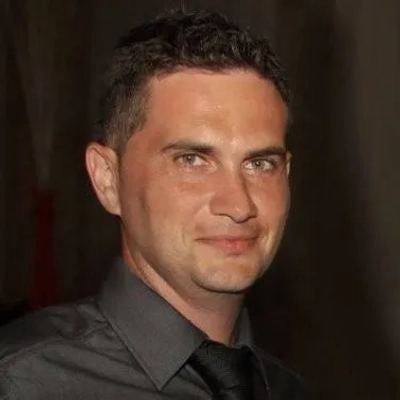
Blend Technical SEO With Human-Centered Storytelling
A career goal I'm pursuing that pushes me to think creatively is developing AI-driven content strategies that not only increase visibility but also generate meaningful engagement for local businesses. The challenge lies in designing campaigns that balance technical SEO requirements with human-centered storytelling, requiring solutions that aren't formulaic. I foster creativity by exposing myself to diverse industries and consumer behaviors, studying unconventional marketing approaches, and experimenting with iterative content testing. I also carve out time for brainstorming sessions without constraints, encouraging ideas that may initially seem impractical but spark novel approaches. Reflection and review play a role as well—analyzing what worked, what didn't, and why, so each iteration sharpens problem-solving skills and broadens strategic thinking. This combination of experimentation, cross-industry insights, and disciplined analysis keeps me agile in crafting innovative solutions that resonate with audiences while meeting measurable business goals.
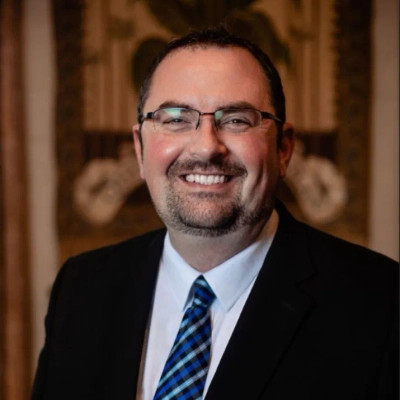
Connect Drone Analytics With Practical Customer Value
We're building a predictive maintenance program that uses AI and drone analytics to identify roof vulnerabilities before they become costly repairs. The challenge lies in translating technical data into practical action plans for clients. To stay creative, I spend time with both field crews and software developers—two groups that think in entirely different languages. Their perspectives spark unconventional solutions, like automating inspection summaries in plain terms homeowners actually understand. The process reminds me that creativity in construction isn't abstract—it's about bridging expertise so technology enhances trust instead of complicating it.
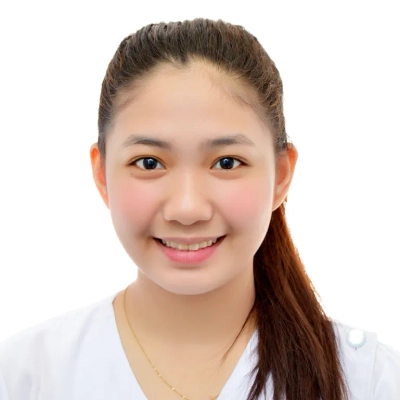
Integrate Neuroscience Into Executive Leadership Development
A career goal I'm pursuing right now is expanding the way executive coaching integrates nervous system science and embodied leadership into business growth. Traditional frameworks often overlook the inner capacity of leaders, so my work challenges me to think beyond standard performance models and design approaches that are both innovative and deeply human.
To foster creativity and problem solving, I intentionally create space for reflection and stillness. I've found that my best ideas don't come when I'm "pushing harder" but when I allow myself to slow down, listen inward, and let solutions surface. I also stay curious by engaging with thought leaders outside of my field from neuroscience to wellness and adapting those insights into fresh strategies for leadership and transformation.
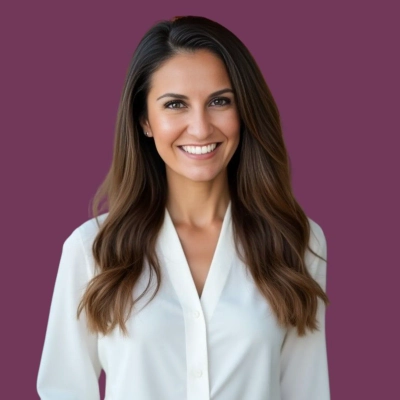
Master Business Functions Through Cross-Disciplinary Problem Solving
A lot of aspiring professionals think that innovative solutions come from a single channel, like inspiration. But that's a huge mistake. A leader's job isn't to be a master of a single function. Their job is to be a master of the entire business.
My career goal is to develop a fully autonomous, predictive supply chain that eliminates all rush orders. This challenges me to learn the language of operations. I stopped managing risk reactively and started focusing on system optimization.
I foster creativity by mandating Cross-Disciplinary Problem Swaps. I spend a dedicated hour each week in the heavy duty OEM Cummins technical forum, analyzing failure reports (Operations data), and then translate those technical problems into marketable solutions (Marketing strategy). This forces an innovative, dual-perspective approach.
The impact this has on my career was profound. It changed my approach from being a good marketing person to a person who could lead an entire business. I learned that the best creative idea in the world is a failure if the operations team can't deliver on the promise. The best way to be a leader is to understand every part of the business.
My advice is to stop thinking of creativity as a separate feature. You have to see it as a part of a larger, more complex system. The best leaders are the ones who can speak the language of operations and who can understand the entire business. That's a goal that is positioned for success.

Lead With Artistic Mindset Rather Than Management
One of my current career goals is to transform how we think about creativity inside leadership. For years, I believed creativity belonged to artists, while business belonged to planners. But as a scientist-turned-CEO, I've learned that leadership itself is an art form — one that demands courage, experimentation, and imagination.
My goal is to treat my career as a living masterpiece. That means leading my company, Seuss+, and my community platform, The Ripple Network, with the mindset of a creator rather than a manager. Each project, partnership, or pivot becomes a brushstroke — imperfect, layered, and deeply human.
This approach challenges me to think outside the box because it removes the box entirely. Instead of chasing linear success metrics, I focus on questions like: Does this spark curiosity? Does it create a ripple beyond me? Does it align with my values and health? When the answer is yes, it's usually the most innovative path forward.
To foster creativity and problem-solving, I build deliberate pauses into my schedule — white space for reflection and reframing. I also run what I call "failure reviews," a practice borrowed from my book Beyond the Ladder, where I revisit what didn't work and mine it for insight rather than judgment. These moments often reveal the most original solutions, because they force me to see patterns others overlook.
Leading creatively also means surrounding myself with diverse thinkers — my "Power Squad." Together, we test ideas, challenge blind spots, and reimagine what's possible. Innovation doesn't always come from grand gestures; sometimes it begins with a single conversation that changes the way you see your own canvas.
For me, thinking outside the box isn't a one-time exercise — it's how I build. Every experiment, every ripple, becomes part of the masterpiece in progress.
—
Sabine Hutchison
Author, Beyond the Ladder | Founder, The Ripple Network | CEO & Co-Founder, Seuss+
sabinehutchison.com | sabine@sabinehutchison.com
